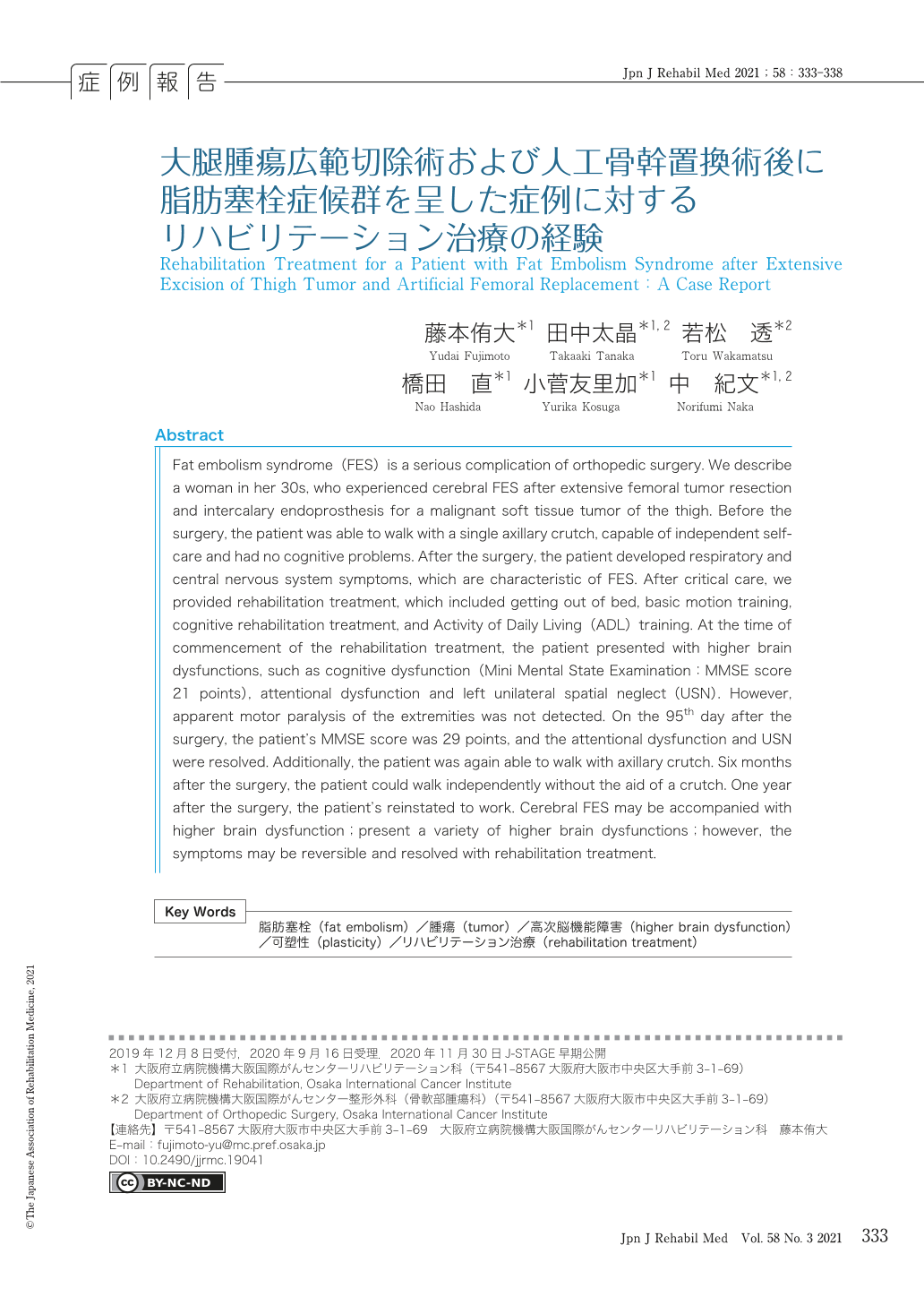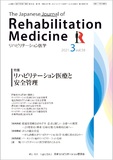Japanese
English
- 販売していません
- Abstract 文献概要
- 1ページ目 Look Inside
- 参考文献 Reference
はじめに
脂肪塞栓症候群(fat embolism syndrome:FES)は,1862年にZenkerらにより提唱され,1873年にVon Bergmannらにより最初の臨床的報告がなされた1).病態的には,何らかの原因で中性脂肪が循環血液中に入り込み,組織微小循環を障害し,塞栓を起こす状態である.その発症には機械的塞栓説(mechanical theory)と生化学的障害説(biochemical theory)の2つの説があるが,十分な病態解明や治療法の確立には至っていない.
FESは,整形外科手術における重篤な合併症の1つである.診断基準としてGurdの診断基準や鶴田の脂肪塞栓診断基準などがあるが,これらは古典的な臨床症状を主としており,確立されたものではない.そのため,FESの発症頻度は報告者により異なるが,全長管骨骨折の0.5〜2%2),骨盤骨折を伴う多発骨折の5〜10%2)という報告もあり,一般的にはまれである.一方で,臨床症状を顕著に呈さずに経過する症例も多く存在するといわれている3).
まれな発症頻度ではあるが,FESの3大臨床症状は,呼吸器症状(低酸素血症),中枢神経症状,点状出血であり,特に呼吸器症状や中枢神経症状は,リハビリテーション治療の対象となる領域である.しかし,FES発症後のリハビリテーション治療の経過に関する報告はみられない.
今回,大腿悪性軟部腫瘍に対し,大腿腫瘍広範切除術および人工骨幹置換術後に発症したと考えられるFES症例を経験したため,その臨床像およびリハビリテーション治療の経過について報告する.なお,本報告に際し,患者には口頭および書面にて十分な説明を行い,同意を得ている.
Fat embolism syndrome (FES) is a serious complication of orthopedic surgery. We describe a woman in her 30s, who experienced cerebral FES after extensive femoral tumor resection and intercalary endoprosthesis for a malignant soft tissue tumor of the thigh. Before the surgery, the patient was able to walk with a single axillary crutch, capable of independent self-care and had no cognitive problems. After the surgery, the patient developed respiratory and central nervous system symptoms, which are characteristic of FES. After critical care, we provided rehabilitation treatment, which included getting out of bed, basic motion training, cognitive rehabilitation treatment, and Activity of Daily Living (ADL) training. At the time of commencement of the rehabilitation treatment, the patient presented with higher brain dysfunctions, such as cognitive dysfunction (Mini Mental State Examination:MMSE score 21 points), attentional dysfunction and left unilateral spatial neglect (USN). However, apparent motor paralysis of the extremities was not detected. On the 95th day after the surgery, the patient's MMSE score was 29 points, and the attentional dysfunction and USN were resolved. Additionally, the patient was again able to walk with axillary crutch. Six months after the surgery, the patient could walk independently without the aid of a crutch. One year after the surgery, the patient's reinstated to work. Cerebral FES may be accompanied with higher brain dysfunction;present a variety of higher brain dysfunctions;however, the symptoms may be reversible and resolved with rehabilitation treatment.

Copyright © 2021, The Japanese Association of Rehabilitation Medicine. All rights reserved.


